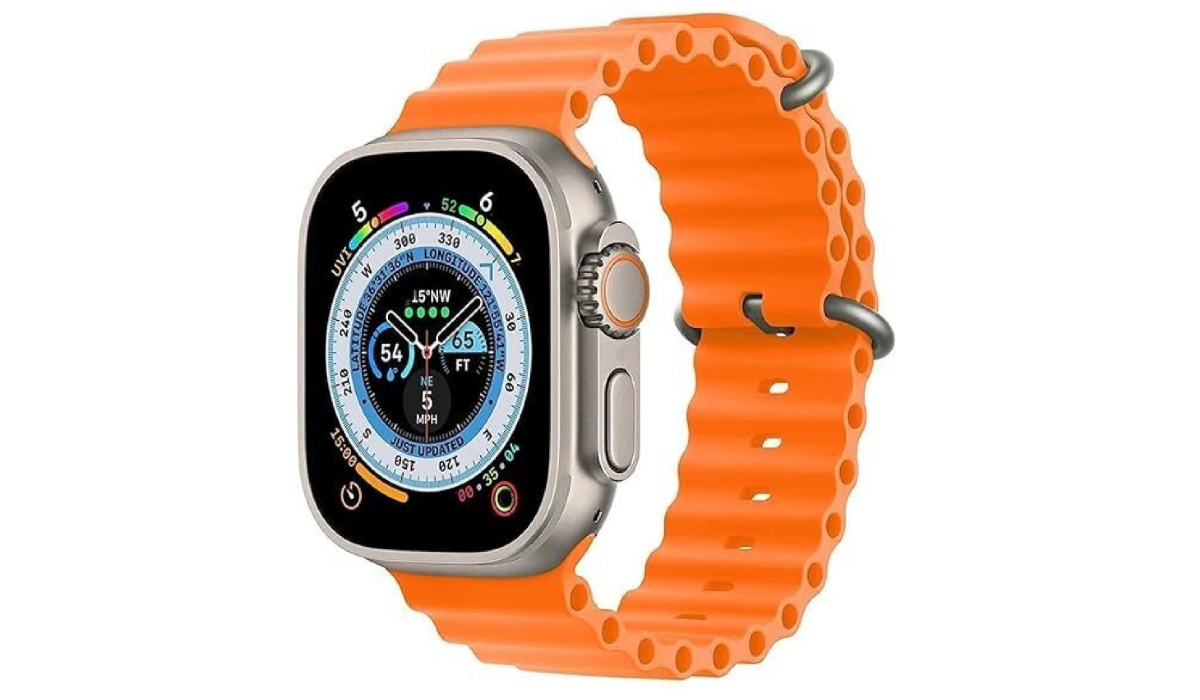The changing landscape of India's smartwatch market seems to have taken a sudden turn at night. For years, it was dominated by its local players, while global giants like Apple and Samsung struggled for presence among billions of annual shipments. However, the category has been flooded with obscure brands, lacking early or significant prominence. They have begun to gain traction with customers and are expected to push the market towards consolidation eventually.
Local brands like Fire-Bolt, Noise, and boAt now control over 60% of the market. Apple and Samsung, on the other hand, saw a decline from 4.5% to just over 2% combined, with 1.1 million units shipped in 2023, according to market research firm IDC.
Meanwhile, newcomers have seen their market share rise from 3-5% in 2020 to 15-20% last year. Vikas Sharma, a senior smart wearable devices market analyst at IDC, told TechCrunch that the category now comprises 134.2 million units annually.
These brands sometimes carry unfamiliar names or are knock-offs of established products. Many are direct copies of big global brands like Apple and Samsung, priced at less than $12 (1,000 Indian Rupees). The price of an Apple Watch in India starts at $360 (29,900 Indian Rupees) for the Apple Watch SE, while the Samsung Galaxy Watch 4 is sold at a price of $290 (23,999 Indian Rupees). Indian smartwatches from brands like Fire-Bolt, boAt, and Noise start at $12.

Apple Watch Ultra lookalike available online in India for around $9. Image credit: Flipkart
Unlike pricier models, non-branded products usually lack warranties. In some cases, retailers offer replacement warranties, but these are not provided by the manufacturer and are often just verbal. Fitness tracking accuracy is often compromised due to the use of lower-end sensors to save costs, while the hardware-software integration leaves much to be desired. However, even in affordable smartwatches offered by Indian-based players, the accuracy – at times – does not match that of Apple Watch or Samsung Galaxy Watch, as these suppliers compromise on sensor quality to keep costs down.
"The sensor accuracy isn't good enough (in most cheap smartwatches) to deliver the same user experience users get in premium models," said Anshika Jain, a senior research analyst at Counterpoint, to TechCrunch.
Jain pointed out the aesthetics, which cause these unknown-brand models to mimic the Apple Watch and Apple Watch Ultra or some advanced round smartwatches, as well as their reasonable prices, helping them attract customer attention.
Counterpoint Research, a market research firm based in Hong Kong, saw the number of unknown brands in the Indian smartwatch market grow from 78 in 2021 to 128 in 2023.
"There has been an increase of almost 80-90% in the number of unknown brands," said Jain. "This clearly indicates how the market has become more crowded now."
Decreasing Prices
The growth of unknown brands in the Indian smartwatch market has not yet significantly impacted all the dominant local players. However, existing players are cautious. Some local brands have started to feel the heat. Additionally, the growing market share of unknown brands has reduced the average selling price (ASP).
Sameer Mehta, co-founder and CEO of boAt supported by Warburg Pincus, told TechCrunch that the decrease in ASP is up to 90%.
"Total volumes have started to decline," he said. "The ASP has dropped, for example, by 90%, which actually doesn't happen in any industry. Name me one industry where prices are chipped away by 90% in just one year."
Market analysts also noted a significant drop in ASP, though not as pronounced as mentioned above.
Jain from Counterpoint, meanwhile, said that ASP dropped from around $59 in 2022 to $36 in 2023, a decline of approximately 39%. "There's a lot of churn at the bottom, which just brings out devices but doesn't cement them in the market. Once that goes by, there will be some consolidation. Everyone will stop investing if no one's making money in the business."
boAt, the third leading smartwatch brand in India, saw a 17% decline in year-over-year growth in the fourth quarter, according to IDC. The smartwatch business contributes about 20% of the startup's revenue.

Image Credit: TechCrunch / IDC
Mehta noted that despite some impact from lesser-known brands, boAt will continue to generate 15-20% of its revenues from smartwatches in the coming years.
Unlike boAt, Fire-Boltt and Noise (the top two brands) saw year-over-year growth in the same quarter.
Gaurav Khatri, co-founder and partner of Noise with support from Bose, told TechCrunch that the startup has not seen any substantial impact from "the continuous inflow of entrants and new brands."
Moves to Preserve the Market
Market experts believe that the ongoing shift with unknown brands expanding their presence will affect all key players – unless the dominant ones change their strategies and add more value to their future smartwatches.
For now, market stakeholders are mainly focused on first-time buyers – similar to unknown brands. Instead, analysts believe that established brands need to focus on existing customers.
"People don't choose these smartwatches (Indian-based brands) for their next purchase with the same level of excitement as their first purchase… the main reason is, without a doubt, the customer experience and device UI, which are not as smooth," said Jain from Counterpoint.
Most Indian-based brands do not focus on bringing unique value-added features to smartwatches, unlike major tech players like Apple and Samsung. Moreover, the local smartwatch manufacturers sometimes use the same original Chinese designs (ODM), limiting product innovation. Many of these models even bear striking resemblance to Apple and Samsung products. However, Indian brands claim to develop local printed circuit boards and design internal software experiences, differentiating themselves from global players. Local assembly actually helps manufacturers avoid a 20% import duty.
Last year, smartwatch brands boAt and Noise entered the smart ring market in India to diversify their product catalogs. However, the smart ring market in India, which saw over 100,000 shipments in 2023, is led by Ultrahuman with a 43.1% share in the fourth quarter, according to IDC.
Mehta from boAt told TechCrunch that the startup is looking to focus on creating different categories in the smartwatch market, such as new models for children and elders, sports, and health, to maintain its presence. Similarly, it aims to design its new smartwatches for second- or third-time buyers more aware of their health and quality, seeking higher-quality devices. However, these changes will increase the pricing of boAt smartwatches.
Market analysts like Sharma from IDC anticipate that the Indian smartwatch market will only see single-digit growth this year due to tough competition from unknown brands and a decrease in ASP. The market once saw over 150% year-over-year growth in previous years.
Sharma also believes that the Indian smartwatch market may solidify in the next two years, and fewer players will remain.
"There will be a flat line that will hit over the next two years… Everything went a bit haywire post-COVID, and now it's come down to normal levels… We will soon see a tipping point," he said.





